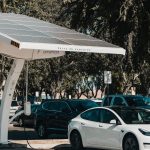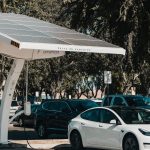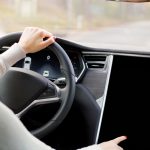In a significant shift within the autonomous vehicle industry, Cruise LLC is reducing its workforce by nearly half, impacting over 1,000 employees. This move marks a strategic realignment as GM focuses on enhancing its personal autonomous vehicle offerings. The layoffs come amidst broader changes in Cruise’s operational focus and signal a new direction for the company within GM’s overarching vision.
Cruise’s recent downsizing aligns with previous strategic adjustments faced by the company. Earlier reports indicated challenges in scaling their robotaxi deployments, which have now culminated in this extensive workforce reduction. The transition reflects Cruise’s need to adapt to the evolving market demands and GM’s emphasis on integrating advanced driver assistance technologies.
Why is GM Shifting Cruise’s Focus?
GM is redirecting Cruise’s efforts towards developing Super Cruise, its hands-free driver assistance system. This pivot suggests a preference for enhancing personal autonomous driving technologies over expanding robotaxi services. The consolidation aims to leverage combined technical expertise to accelerate advancements in both assisted and autonomous driving capabilities.
How will the Layoffs Affect Cruise’s Leadership?
The workforce reduction includes the departure of Cruise’s CEO and several top executives. Key figures such as Marc Whitten, Nilka Thomas, Steve Kenner, and Rob Grant have been laid off. However, Mo Elshenawy, the chief technologist, will remain until the end of April to support the transition, ensuring continuity in technical developments.
What Support is Offered to Laid-Off Employees?
Cruise is providing comprehensive severance packages to affected employees, including eight weeks of pay and additional compensation based on tenure. The company is also offering three months of COBRA coverage and LinkedIn Premium subscriptions to aid in job searches.
“We are grateful for their passion and contributions,”
a Cruise spokesperson stated, emphasizing support for employees moving forward.
In the broader landscape, Waymo continues to expand its robotaxi services, maintaining momentum in the autonomous vehicle sector. While Cruise reduces its focus on robotaxis, Waymo has launched new services in Los Angeles, San Francisco, and Phoenix, demonstrating a contrasting approach within the industry. This divergence highlights differing strategies among leading autonomous vehicle companies as they navigate market challenges and technological advancements.
As GM integrates Cruise’s technical teams with its own, the future of autonomous vehicle development within the company appears to be concentrated on personal vehicles rather than ride-sharing models. This strategic decision may influence the competitive dynamics of the autonomous vehicle market, positioning GM to potentially lead in personal autonomous driving technologies while other companies like Waymo continue to develop and expand robotaxi services.
The restructuring of Cruise under GM’s direction underscores a pivotal moment for the company and the autonomous vehicle industry. By reallocating resources and focusing on personal vehicle technologies, GM aims to streamline its efforts and enhance the effectiveness of its innovative solutions. Employees and stakeholders will be observing how this strategic shift impacts Cruise’s market position and the broader autonomous vehicle landscape.










